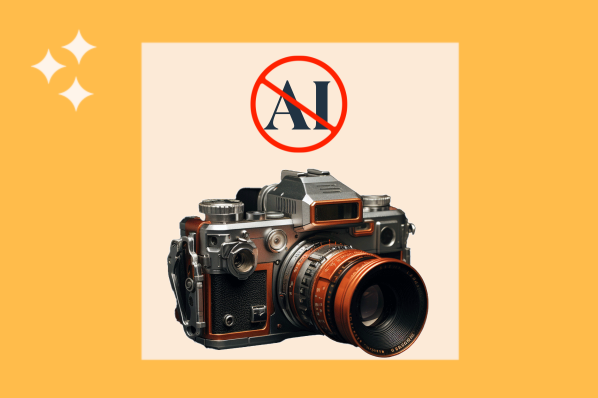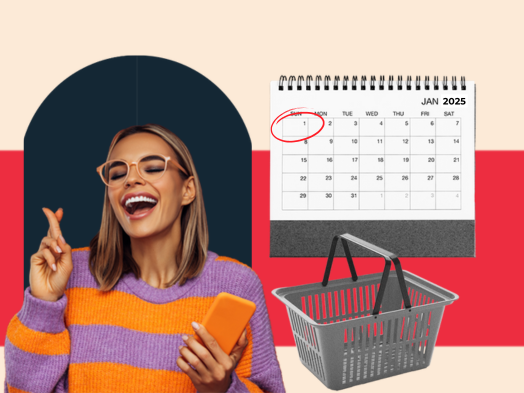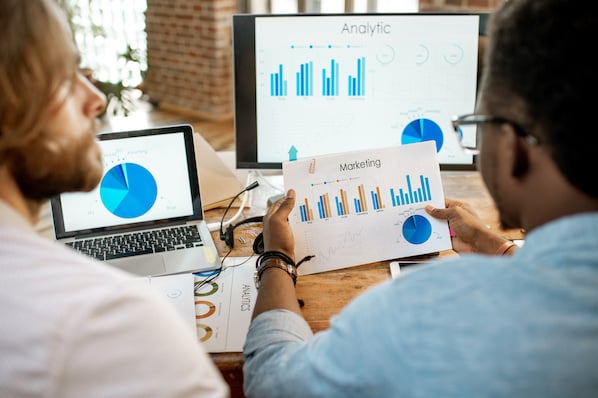What’s Dove’s The Code campaign?
The Code is a two-minute short film featuring a woman prompting an image generator to create images of a confident woman and the most beautiful woman in the world. The resulting photos are of blonde, thin, white women, representing a stereotypical beauty standard that leaves the main character disheartened. The video ends with what the most beautiful woman in the world looks like according to Dove’s Real Beauty standards.
The personal care behemoth also partnered with celebrities and creators to further its message, like actors Drew Berrymore and Reba McEntire and creators Samyra and Taryn Delanie.
Taryn, for example, is shown an AI-generated image of herself and gives her take, saying that her AI counterpart is beautiful but looks nothing like her because it lacks the features that make her human, like skin texture and freckles.
Dove’s message is clear: using Gen AI to create images of women poses a significant risk to the self-esteem and self-perception of women worldwide, and it’s taking a stand against it.
I’ve only seen positive responses to the campaign. Caleb, @mr.paidsocial on TikTok, talks all things AI and automation and says that Dove’s short film is one of the most important ads people will ever watch. He writes, “This is such an important discussion to have around the ethics around AI-generated models,” and calls Dove the gold standard.
On LinkedIn, Ayori Selassie said, “They [Dove] just showed us what great marketing can do with AI and what AI can do for great marketing, without hype, and without fear. Christopher Rizzo, SVP of Digital & Social Strategy at Syneos Health, said, “I doubt AI could craft a caption that captures the brilliance of this ad.”
Lola Bakare, CMO Advisor, made my favorite comment: “Not every efficiency you find is a keeper.”
What You Need to Know About Dove’s AI Playbook
The Real Beauty Prompt Playbook that dropped with the video is a hefty 72 pages, but for good reason — Dove wants to set new standards for digital representation and help others adhere to them.
My takeaway from reading it is that, overall, it’s a high-quality educational tool. I found its explanations of prompting and gen AI well-written and easily understandable for all audiences. (This isn’t always the case when I read AI content.)
It’s also clear that Dove is a beauty expert, and we learn a disheartening stat that really shows why it’s taking action: 1 in 3 girls feel pressured to alter their appearance because of what they see online, even if they know images are fake or AI-generated.
The playbook aspect is a step-by-step guide to building prompts that create hyper-realistic images with accurate human attributes.
We also get an impressive Inclusive Prompting Glossary of suggested terms to include in our prompts, like terms for gender expression, cultural representation, skin tone, and even how to infuse emotion into eyes.
I was most impacted by the choice to display side-by-side comparisons of real people and their AI-generated counterparts produced with terms from the included glossary.
The generations are pretty accurate representations of the subjects, which really shows us that the inclusive terms will help brands create more representative images for brands who use them. The picture below is an example of one of those comparisons.

Dove’s Unique Stance on AI
As I mentioned, Dove’s new campaign includes a promise never to use AI to generate or distort women's images, which is why I think this campaign is so powerful.
Unlike other brands that are embracing AI with open arms, Dove considers the community it has worked so hard to uplift and support and uses its platform to call attention to the dangers of AI and remain true to its brand promise (a huge draw for consumers).
And, instead of shaming those who will use Gen AI to create images of women, it says “Let us help you do it responsibly.” There’s no guarantee that brands will use the playbook, but I honestly don’t see why they wouldn’t — it’s a well-researched and well-thought-out guide to creating representative Gen AI images.
Good on Dove.
I do wonder, though, if we could call this newsjacking.
Levi’s faced a very public scandal in early 2023 after announcing its plan to use Gen AI images of models to bring more diversity to its advertisements.
Consumers, myself included, were confused about why Levi’s wouldn’t hire a more diverse set of underrepresented models (who already struggle to get booked for opportunities) and pay them to be in their ads.
On X, Glynn Tarrant said, “So, I guess for some companies, it’s just easier to generate fake non-white people with AI than it is to actually pay real non-white models for their work?”
I could say that, despite being in different industries, Dove is trying to position itself as the “bigger person” who would never lead people astray with AI-generated images like other D2C brands might do.
Dove also hasn’t been controversy-free: Pascal Dangin told the New Yorker that he retouched the photos from a Real Beauty campaign in 2008: “Do you know how much retouching was on that? But it was great to do, a challenge, to keep everyone’s skin and faces showing the mileage but not looking unattractive.”
Since then, Dove has pledged “Zero digital distortion of women,” and parent company Unilever announced a ban on “excessive Photoshop editing” in 2021.
Excessive Photoshop editing doesn’t mean zero Photoshop editing, which would classify Dove’s stance as hypocritical newsjacking because it is still altering images of women to achieve a specific result.
In an age where brand trust is low, Dove needs to hold to its promises or risk facing a Levi’s-type scandal.
If it holds true to its promises, it’s made impressive strides with AI ethics that other brands can stand to learn from.
Marketing Campaigns



![How to run a marketing campaign on a tight budget [expert tips & free tools]](https://53.fs1.hubspotusercontent-na1.net/hubfs/53/19_What%20is%20a%20Marketing%20Plan%20%26%20How%20to%20Write%20One%20%5B+Examples%5D.png)

![How to Create a Successful Marketing Campaign [Strategies, Data, + Examples]](https://53.fs1.hubspotusercontent-na1.net/hubfs/53/marketing-campaign.webp)
![I Took a Deep Dive Into PERT to Create More Accurate Time Estimates [+ Templates, Examples, and Formula]](https://53.fs1.hubspotusercontent-na1.net/hubfs/53/pert-1-20250213-8082845.webp)
![4 Clever Olympics Marketing Campaigns [+Top Takeaways]](https://53.fs1.hubspotusercontent-na1.net/hubfs/53/best-olympic-marketing-campaigns-1-20240809-9542066.webp)


